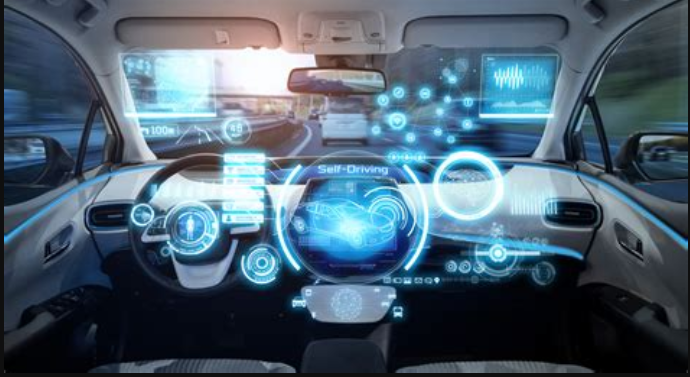

Naqeeb Ahmed
Self-Driving Cars Won’t Save Cities - Here’s What Will
Self-driving cars are coming. Maybe in two years, maybe in twenty, But someday the steering wheel will fade into history like Jell-O Salad and these weird coasters. The elderly and disabled will have cheap, convenient transportation, Instead of racing to work, you’ll sit back, relax, and generate ad revenue for me. and crashes will go from unfortunate reality to rare tragedy.
When three technologies converge: self-driving, electric, and shared cars, the problem of how to get from A to B will pretty much be solved. For the 68% of us living in cities, there will be no need to own a car. In this world, transportation is a service, waiting on every street, corner, nook, and alley. No waiting, hailing or repairing. Of course, convenience is nothing new. The real force of progress is economic. Without the cost of drivers and gasoline, prices fall dramatically. They won’t just be faster, easier, safer, and, ya, know, better for the planet or whatever, but also affordable for everyone. The car will become the ideal form of transport. Not despite its cost, but, in part, because of it. and that’s the problem: More cars means more congestion, more parking, more challenges for cities. You might be thinking, sure, and automation can solve them. Perhaps. But mass transportation is a very complicated and political equation. It’s not that self-driving cars are bad, exactly the opposite, it’s that so much optimism hides real obstacles, or, at the very least, question marks, on the road to the city of the future. Like many technologies, individually, self-driving cars are great Collectively, they have all kinds of unexpected consequences.
Everything about them we hear through the lens of technology, and when you’re a programmer, everything looks like Ruby on rails. To really understand them, we need the mindset of a Sim City professional. And at the top of things, Urban Planners hate are highways, parking lots, wide roads, and suburbs. Basically… cars. Or everything America is obsessed with. Today, electric vehicles make up less than one per cent of new car sales in the U.S. Even in Norway, where it’s 22%, that’s only 84,000 electric, compared to one billion total. In other words, we’re a long ways away from most cars being electric. Until then, they release 13% of all greenhouse gas, kill more people from pollution than crashes, and make cities look and sound like…well, this. But even if every car were electric tomorrow, and self-driving technology was perfect, AND everyone could afford it, there’s still a fundamental problem: space, the most valuable resource in a dense, urban area. 60 people commuting to work can look like this, or it can look like this. If we’re generous and assume two people per car, that’s still not 60. Imagine how wasteful sidewalks would be if everyone required a 2-meter buffer. Well, you don’t have to. Fine, you say, so we’ll build more and bigger roads. Do not pass go, and do not collect two hundred dollars. This is a classic mistake, because bigger roads do work, just, only for a minute. As roads improve, more people drive, until it's just as busy as it was before. Bigger roads? More traffic. Same congestion. Remember: transportation is an ecosystem. You can pull any lever you want, and with the best intentions, but change one variable, and three dominoes down the line, who knows what happens. Trust me, I watch levers get pulled all the time. Plus, money spent on roads isn’t spent improving trains, bikes, and busses. So, why do roads get bigger anyway? In part, because politicians serve short terms. Reduce commute time, get reelected, and then watch it return to normal. Roads determine the shape, health, and success of a city, they push buildings further apart, and housing into suburbs. These long distances between home and work, or school, or shopping, encourage and often require, the use of a car. What could be an easily walked or biked community, is stretched out into an endless sea of buildings where people get less exercise, make fewer friends, even spend less money? But for 92% of their life, cars just sit.
In the U.S. alone, there are one billion parking spaces, four times the number of cars, or, together, the size of Connecticut. Most cities have Parking Minimums, For example, a bowling alley in San Jose, California must provide at least 7 parking spaces per bowling lane. A business office requires 1 for every 250square feet, but a research office, only 300. Which is just as arbitrary as it sounds. In 2004, the city of London removed these minimums, and parking fell from 1.1 spaces per apartment to 0.6. And since businesses are incentivized to create as much parking as customers need, this switch from free to free-market parking shows there was previously too much. Of course, parking is never really free, In residential areas, it hides in the cost of the rent. In the U.S., that’s an average of $225 a month, sometimes much more. And taxpayers bear the cost of free public parking whether they use it every day or can’t afford a car and only breathe-in their fumes. Worse, Americans incentivize driving with the federal Commuter Tax Benefit, 7.3 Billion dollars a year in write-offs for those who drive to work. This alone causes an estimated 4.6 billion more miles to be driven and moves wealth from poor to rich. Meanwhile, the government loses 7 billion dollars, Which, I have a feeling it could find a better use for now, you might be thinking, all this talk of parking and sprawl and roads, it assumes more cars in the future. But when we share them, won’t there actually be fewer? Well, maybe. But there’s good reason to be sceptical. For every mile shared Uber and Lyft rides save, they add 2.6. How is that possible? 45% of the time they’re empty, driving to and from pickups. and 60% of riders say they would’ve otherwise walked, or biked, or stayed home. Driverless cars will be more efficient, but not fundamentally different, there’ll be empty, wasted miles, and many who share will do so instead of a more efficient means of transportation. And because demand fluctuates, they’ll still need parking. Having enough cars to get everyone to and from work leaves many with nothing to do for the rest of the day. They could go park outside the city, but that means more miles driven. Plus, they all need somewhere for recharging, cleaning, and maintenance.
Now, here’s the thing: It’s easy to imagine a future where automation is so efficient, none of this really matters, For example, this study estimates a 25-35%increase in traffic flow, which is very encouraging, Here’s the catch: only when nearly every vehicle is self-driving. Eventually, cars will no longer have the money coordination problem, where one car can slow down a city. But that’s the key: It only takes a single non-self-driving car. Even with 75% driverless, the study says “the improvements are minor.” So, someday they may solve the transportation problem, but first, they could make it much worse. The most efficient way to travel isn’t the car, or train, or plane, it’ your feet - minimal infrastructure, and a very small well footprint Almost as good are bicycles and skateboards. Of course, these alone are not enough, so transportation is a balance. It’s not a bus versus rail versus a car, but all of the above. When twice a day, 5 days a week, thousands of people need to get from roughly here to roughly here, well, you’re probably looking for rapid transit. Within the city, where routes and demand change over time, the bus is probably your answer. But self-driving cars threaten this balance. The first to adopt them will be those that can afford it, And as more and more upper and middle class disappear from public transit, so will its funding disappear. To them, public transit will seem old and unnecessary. But it’ll still be very important for much of the population. If cities want to keep an efficient balance, they need to prioritize accordingly Designing first for walking and biking - open spaces, clean sidewalks, and instead of fighting the homeless, well, maybe fighting homelessness. After that, encouraging public transit - the most efficient, cost-effective way to move huge groups of people. And finally, controlling the number of cars, Making sure drivers themselves pay their costs, including those you can’t see. The price of tolls and parking should increase with demand, creating an incentive not to drive, and managing congestion during peak-hours. None of this will be easy, but, ultimately, transportation is an equation. The difference between an overcrowded city and a comfortable one is finding the optimal, mathematical solution. Cities have to find the right balance of old technologies and new ones like dock-less, electric scooters, bike-sharing, even Segways.